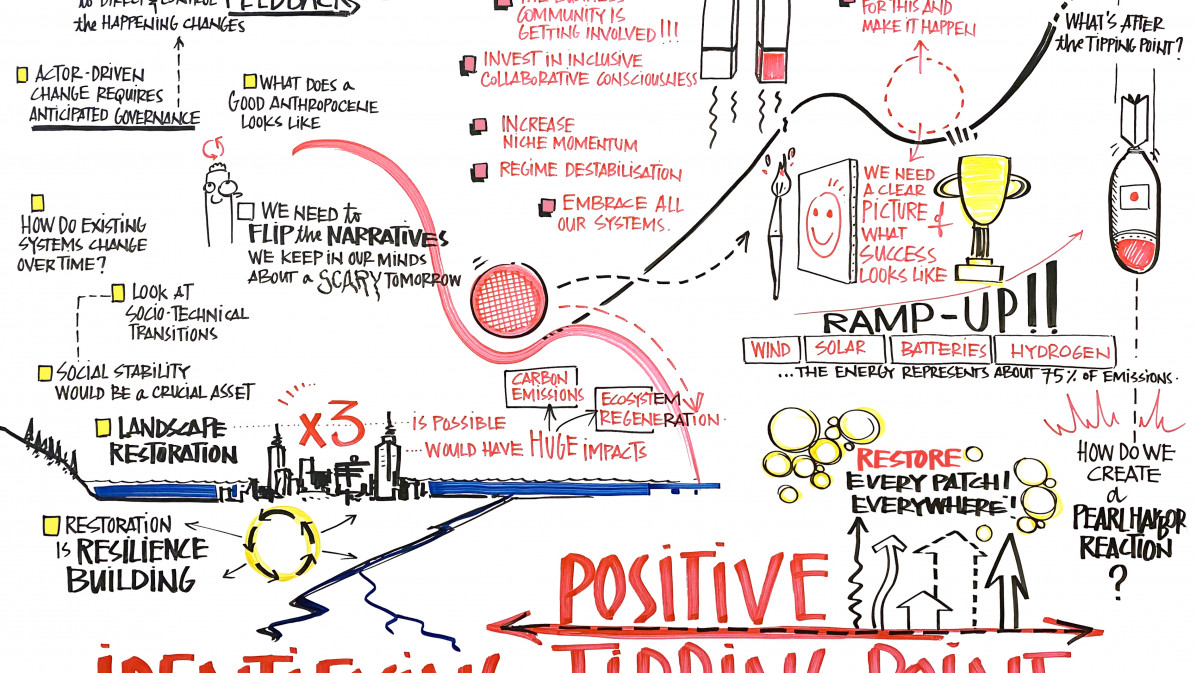New 'radical collaboration' gives hope on climate crisis
What do we do now we know the Earth may be passing five tipping points? They include the collapse of the Ice Sheets in Greenland and West Antarctic, tropical coral reef die-back and Northern permafrost thawing abruptly. That is according to the latest research in Science.
Thinking the Unthinkable has been collaborating with the three co-authors, climate-biosphere scientist David A McKay, Johan Rockström, Director of the Potsdam Institute for Climate Impact Research, and Tim Lenton, Director of the Global Systems Institute at the University of Exeter.
The conference was rigorous on the science and extraordinarily positive in terms of the shared determination to come up with solutions to address a crisis when the world is already at 1.3 C degrees of warming.
The conference explored in three intense days how positive tipping points can bring social economic transformation and how. Tipping points are systemic non-linear, i.e. exponential transformations. Carbon Brief has published a detailed summary of the conference.

The difference between Earth tipping points and human tipping points was debated. Prof Frank Geels, professor of system innovation at the University of Manchester, told the conference: “In the social sciences, I don’t think it works exactly the same way (as natural sciences)…The thing that is really appealing to policymakers is the idea that we only have to do something really small and then we see these huge effects, which is pretty misleading because it’s primarily the efforts leading up to the tipping point where a lot of effort will actually be needed.”
There need to be preconditions. The system has to be ‘ripe’ for tipping. To be successful in tipping the system, there has to be capability to facilitate the changes. Any resistance from vested interests has to be overcome; no easy task given, for example, the fossil fuel lobby. Any transition has to be socially just, as there will be many losers. Frank Geels warned of prioritising speed over justice. ‘Festina lente’, as facilitator Betty Dhamers put it later – i.e. hurry up slowly.
Conferences with this level of engagement never end. Immediately afterwards, Tim Lenton compered Tipping Point Alliance building workshop to channel energy for a range of follow-ups. They include reports on positive tipping points feeding into COP27 and COP28.
Ideas and energy were shared by some 50 participants. The Bezos Earth Fund, WRI Systems Change Lab, Systemiq, the Wellcome Trust and the Global EverGreening Alliance were among the major organisations represented.
Also in the room were activists working on positive change such as Femke Sleegers, the convener of the Dutch Tipping Points coalition, impressing all with her on campaigning for policy change at what she said was her first academic conference.
The Netherlands is emerging as a key place to test-out positive tipping points. Earlier, Kate Raworth, author of Doughnut Economics explained how her work on donut economics had been boosted after the city of Amsterdam adopted it as a basis for public policymaking in 2020.
A range of other practical ideas were launched. Colin Butfield of Studio Silverback, the co-producer of many of Sir David Attenborough’s documentaries, launched the Open Planet Initiative.
A climate justice hub linked to the Global Systems Institute at the University of Exeter was also announced.
A lot of the work will be carried ahead in 17 breakout groups. It is invidious to single out one. But TTU worked with leading communications specialists and climate activists over three days. The agreed goal; to try to figure out what has to change for messages on climate and nature to reach wider audiences.
Drawing on deep listening to design messages that were respectful and appropriate to the many different audiences and are delivered by trusted messengers. These were among the ideas to be explored in the future.
Since the conference, across multiple channels; Google docs, WhatsApp and social media, a host of other ideas are being developed. There is discussion on what the follow-events should look like.
There was discussion of how to move from talk of ‘radical collaboration’ into putting it in action – no easy task.
At the conference end, the Johan Rockström told participants that they had achieved something ‘quite special’.
Never before had a systemic framework to link the human and the biophysical to address the climate & nature emergency been formulated by such a wide range of actors. Much work needs to be done and at great pace, he said.
